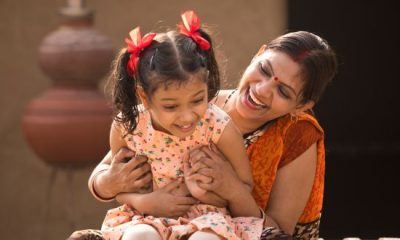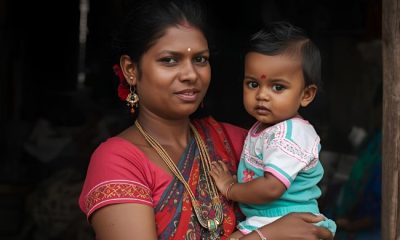New Delhi: It’s not just the national capital New Delhi that is covered in thick layers of smog and haze owing to hazardous levels of air pollution. Various parts of Delhi-NCR including Faridabad, Noida, Bhiwadi, Fatehabad and Jind have been reporting severe air quality index (AQI), leaving people gasping for fresh air. AQI between 401 and 500 is considered ‘severe’ and is capable of affecting healthy people and seriously impacting those with existing diseases. The WHO recommends average annual PM2.5 to be at 5 micrograms per cubic meter. In view of the toxic air, schools have been shut, especially for primary classes, across various parts of Delhi-NCR till November 18. How does air pollution affect children more and what precautions need to be taken? Team Banega Swasth India spoke to medical experts to find answers.
Also Read: How To Protect Yourselves While Living In An Air Emergency? Dr Arvind From Medanta Explains
Dr Arvind Kumar, Chairman of the Institute of Chest Surgery, Chest Onco-Surgery and Lung Transplantation at the Medanta – The Medicity in Gurugram said newborns are most vulnerable to air pollution. He explained,
An adult breathes about 12-14 times a minute, whereas an infant breathes 40 times a minute. When you are breathing faster, you have that much air going into your body. Infants and children have a far higher exposure than adults. Secondly, infants have growing tissues. When chemical attacks a growing tissue, the damage will be far more than tissues of adults that are already developed.
The higher breathing rate of children is one of the reasons behind the closure of schools, said Dr Arvind. He clarified,
In school, children tend to run around, from one classroom to another and that increases the respiratory rate, making them inhale more toxic air than they would sitting inside the house. Also, schools start in the morning when pollution levels are the highest.
The air inside the house is more or less the same as the outside air. It knows no boundaries, said Dr Arvind. However, the pollution levels near highways, roads or industrial areas are much higher.
Also Read: From Pink To Black, A Chest Surgeon’s First Hand Account Of The Impact Of Air Pollution On Lungs
Dr Shaguna Mahajan, Senior Consultant Paediatrician based in Gurugram has reported at least a 20-30 per cent rise in patients complaining of cough and breathlessness due to air pollution. Explaining the reason behind the rise in respiratory disorders among children, Dr Mahajan said,
Children’s lungs are underdeveloped compared to adults so their capacity to handle air pollution is way lesser than that of adult lungs. Exposure to air pollution damages children’s lungs – which are at a developing stage – making them prone to ailments like cough, asthma, severe wheezing, bronchitis, and skin and eye allergies.
It takes children five to six years to build their own immunity. Hence, infants and younger children are more susceptible to infections than teenagers or adults, said Dr Avadesh Ahuja, Consultant Paediatrician and Neonatologist at Fortis La Femme. He added,
Particulate matter present in the air tends to settle down overnight. Children are at the same height as the maximum levels of pollutants in the air. Importantly, these are just physical impacts of air pollution. Shutting down schools and forcing children to stay put indoors affect their mental, emotional and social well-being as they are away from their friends and glued to screens.
Also Read: Delhi Pollution: Air Purifiers, Oxygen Cylinders Come To Rescue Of Elderly At Old Age Homes
The rate of preterm births and the number of low-birth babies increase due to air pollution, said Dr Ahuja. He added,
Lungs of preterm babies are already compromised and further exposure to pollution of this level affects the lungs even more.
Protect Your Child From Air Pollution
Dr Shaguna Mahajan said the only way out of the killer air is to breathe clean air. She said,
Human beings are not meant to handle pollution of this level. We have no immune system or reserves to handle poison and the only way out is to not breathe it.
However, there are some precautions which one can take to reduce the exposure and impact of the toxic air:
1. Limit Outdoor Activities; Reduce Indoor Pollution: It is crucial for children to limit their outdoor activities at the peak pollution hours that is early mornings and evenings, recommends Dr Nikhil Modi, Senior Consultant, Respiratory and Critical Care Medicine, Indraprastha Apollo Hospitals. Children between 0 to 5 years of age are at the maximum risk from pollution due to weaker immunity, therefore, Dr Modi suggests reducing their exposure to indoor pollution generated from sweeping or cleaning the house and burning of incense sticks and dhoop. Dr Ahuja added,
Curtains and carpets can collect dust. Avoid having too many carpets inside the house. And, after sweeping any room, wait for half an hour, let the dust settle and then allow kids to enter the room.
Also Read: Can Air Pollution Cause Cancer? Here’s What AIIMS Doctor Has To Say
2. Wear Masks: A face mask is recommended for people across age groups, especially when stepping out. Dr Ahuja explains,
A mask won’t stop you from breathing polluted air but filters out smaller particulate matter, ones less than 2.5 micrometers. But don’t make children below two years of age wear a mask.
3. Use Air Purifiers: Utilising air purifiers can contribute to a healthier indoor environment, particularly for children who spend more time at home. However, it’s important to note that for healthy children and individuals who regularly go outdoors, air purifiers are not recommended for them, said Dr Modi.
4. Monitor Your Health: Children especially those with a history of asthma should take precautions and monitor their asthma with a peak flow meter, suggests Dr. Nimish Shah, Consultant, Respiratory Medicine, Jaslok Hospital & Research Centre in Mumbai. Consult your pulmonologist in case symptoms are out of control to ensure medications are optimised.
5. Stay Hydrated And Consume Nutritious Meals: It is critical for the children to stay hydrated since it can assist in keeping their respiratory systems moist and ease any irritation caused by pollution. Additionally, a diet rich in antioxidant-rich fruits and vegetables can help boost immune systems.
Also Read: Number Of Patients With Respiratory Problems Almost Doubled Amid Air Pollution: Expert
NDTV – Dettol have been working towards a clean and healthy India since 2014 via the Banega Swachh India initiative, which in its Season 10 is helmed by Campaign Ambassador Ayushmann Khurrana. The campaign aims to highlight the inter-dependency of humans and the environment, and of humans on one another with the focus on One Health, One Planet, One Future – Leaving No One Behind. It stresses on the need to take care of, and consider, everyone’s health in India – especially vulnerable communities – the LGBTQ population, indigenous people, India’s different tribes, ethnic and linguistic minorities, people with disabilities, migrants, geographically remote populations, gender and sexual minorities. In a world post COVID-19 pandemic, the need for WASH (Water, Sanitation and Hygiene) is reaffirmed as handwashing is one of the ways to prevent Coronavirus infection and other diseases. The campaign will continue to raise awareness on the same along with focussing on the importance of nutrition and healthcare for women and children, fight malnutrition, mental well-being, self-care, science and health, adolescent health & gender awareness. Along with the health of people, the campaign has realised the need to also take care of the health of the eco-system. Our environment is fragile due to human activity, which is not only over-exploiting available resources, but also generating immense pollution as a result of using and extracting those resources. The imbalance has also led to immense biodiversity loss that has caused one of the biggest threats to human survival – climate change. It has now been described as a “code red for humanity.” The campaign will continue to cover issues like air pollution, waste management, plastic ban, manual scavenging and sanitation workers and menstrual hygiene. Banega Swasth India will also be taking forward the dream of Swasth Bharat, the campaign feels that only a Swachh or clean India where toilets are used and open defecation free (ODF) status achieved as part of the Swachh Bharat Abhiyan launched by Prime Minister Narendra Modi in 2014, can eradicate diseases like diahorrea and the country can become a Swasth or healthy India.




















